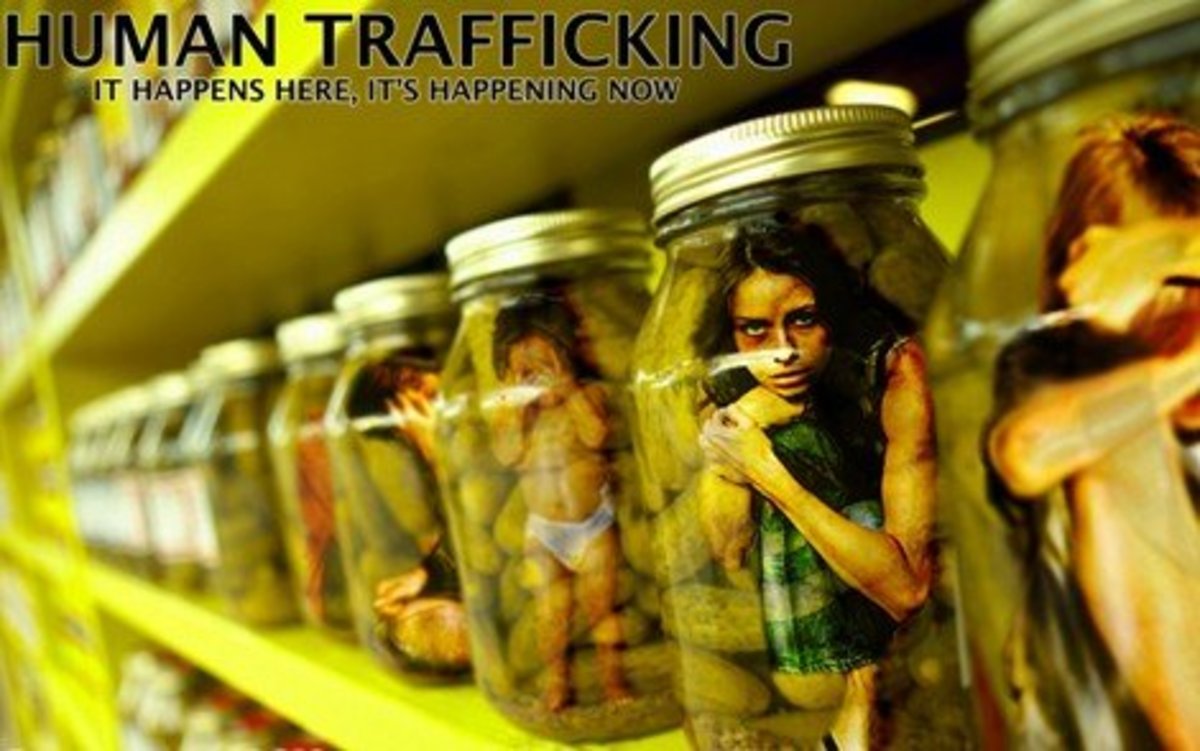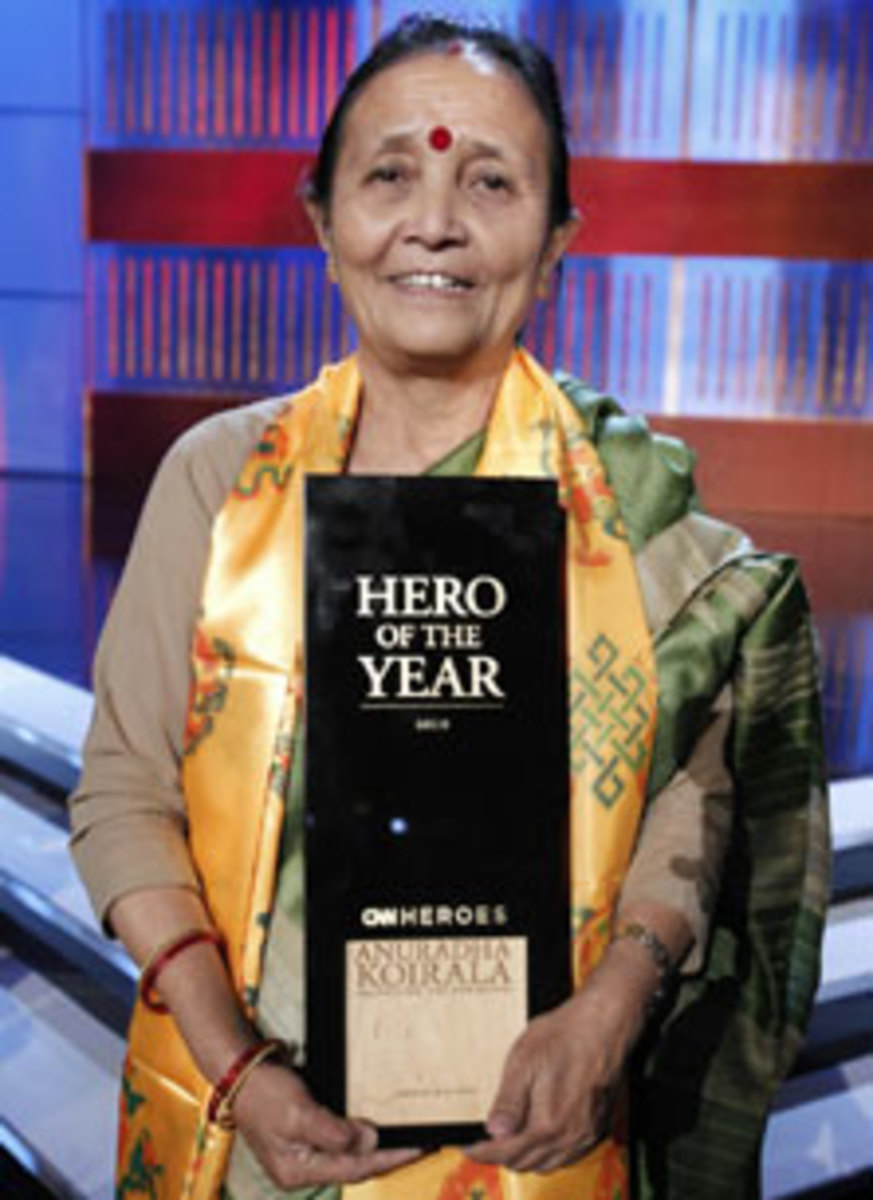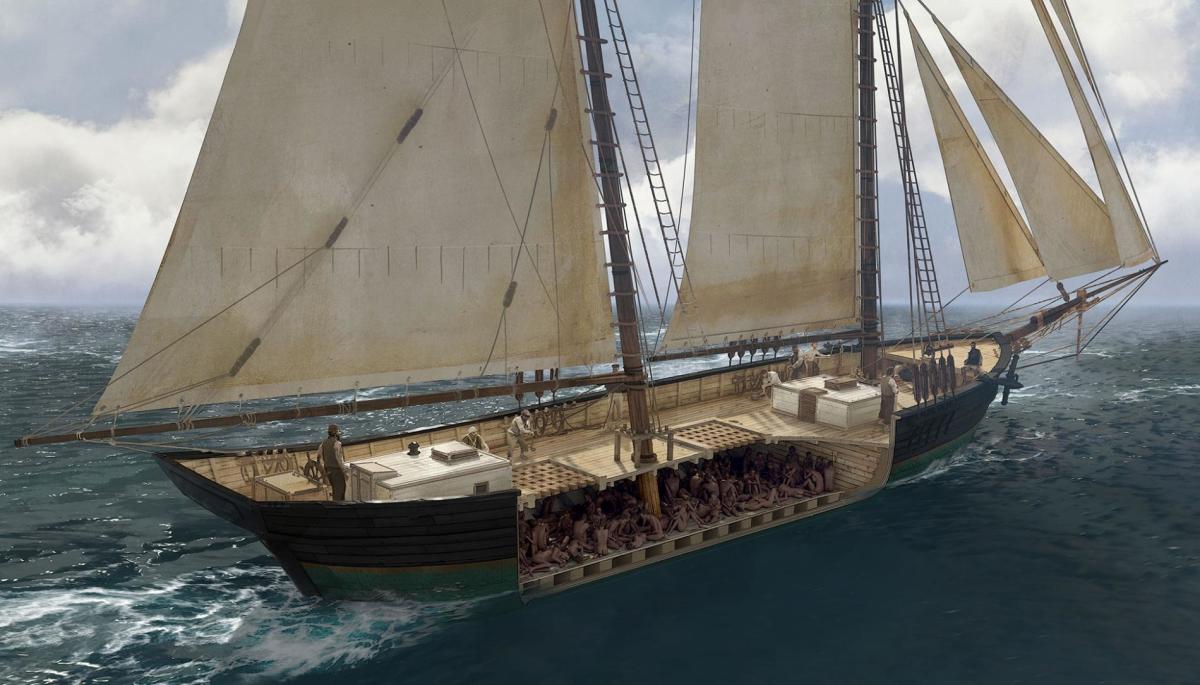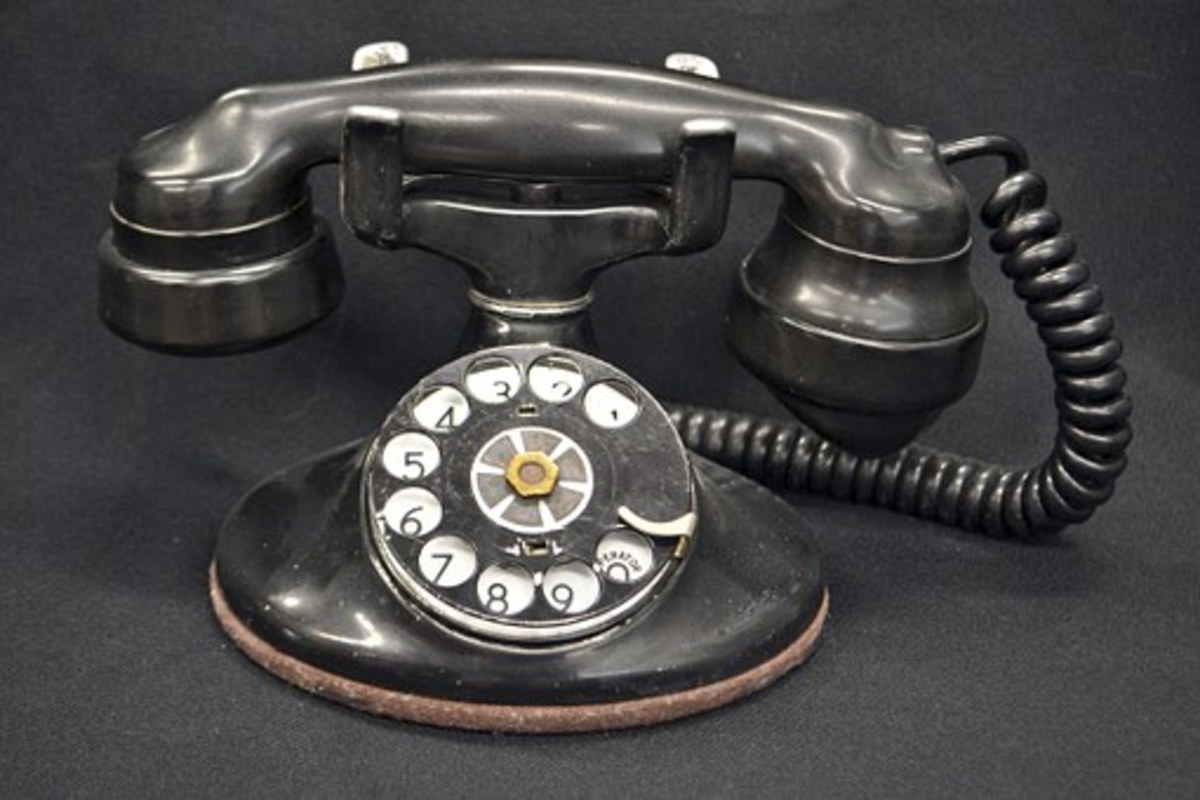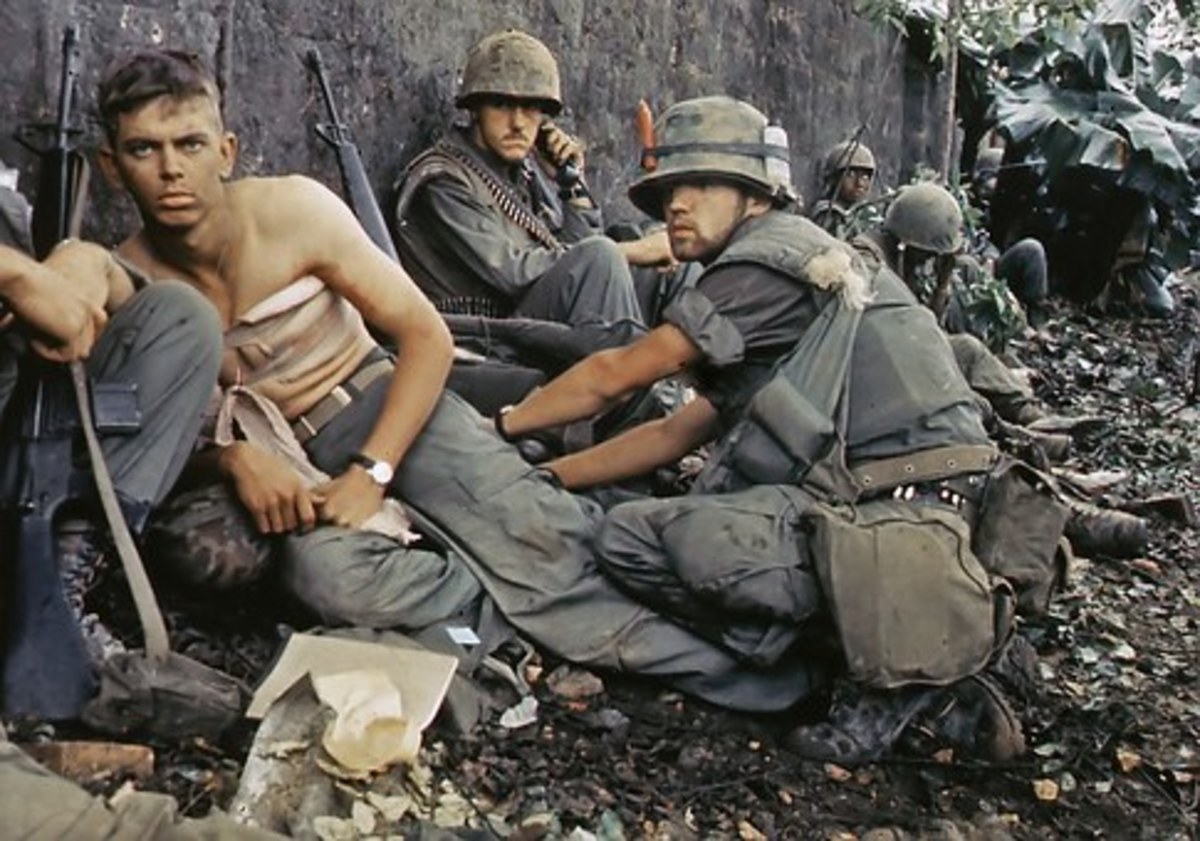Slavery in today's America
Still exists!
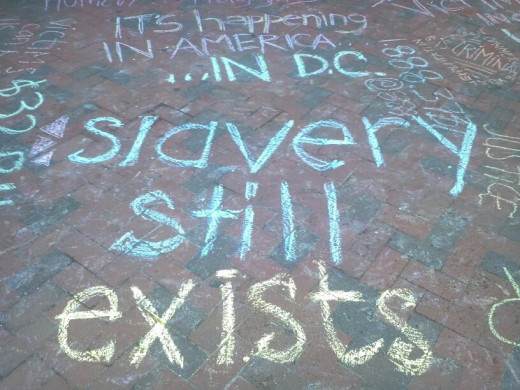
Slavery in Western World Today
Sexual Slavery and Human Trafficking
In America
BY: ZEESHAN ESACK
Sexual Slavery and Human Trafficking in America
On February 24, 1863 the great leaders of this country abolished slavery, a problem most Americans believe was eradicated more than 140 years ago, only its not. Today there are more than 27 million people are enslaved around the world (Batstone). With anywhere between 50,000 to 75,000 people being trafficked in and out of the United States yearly as sex slaves, domestics, garment, and agricultural slaves. An estimated 40% of trafficking victims are under 18 (Djansezian). Sexual exploitation includes but is not limited to sexual harassment, rape, incest, battering, pornography and prostitution. By definition, sexual exploitation is a practice by which person(s) achieve sexual gratification or financial gain or advancement through the abuse of a person's sexuality by abrogating that person's human right to dignity, equality, autonomy, and physical and mental well being (Gunilla).” Human trafficking is an umbrella term used to describe all forms of modern-day slavery. No longer is this a term from the past, but a horrific reality in our present and, unfortunately, our future (Thompson). Prostitution includes casual, brothel, escort agency or military prostitution, sex tourism, mail order bride selling and trafficking in women, however not all prostitutes are trafficked or sex slaves.
This vast exploitation of humans for profit is a multi billion dollar industry. The United States is a source and destination country for thousands of mostly women, and children trafficked for the purposes of sexual and labor exploitation. This is the major aspect of gender violence, because it is a specific group which is being targeted and exploited. 90% being women, 10% are male and of that 90%, 50% are children. The average ages targeted are teens; however the trend for younger girls is becoming the norm. Sexual exploitation is a vehicle for racism and first world domination, disproportionately victimizing minority and third world women, some argue (Ekberg). Local and global sex industries are systematically violating women's rights on an ever increasing scale. Sexual exploitation violates the human rights of anyone subjected to it, whether female or male, adult or child, Northern or Southern. Women and girls, largely from East Asia, Eastern Europe, Mexico and Central America are trafficked to the United States into prostitution. Some men and women, responding to fraudulent offers of employment in the United States, migrate willingly. Of these some are done legally and illegally but are subsequently subjected to conditions of involuntary servitude at work sites or in the commercial sex trade.
In addition, an unknown number of American citizens and legal residents are trafficked within the country primarily for sexual servitude and, to a lesser extent, forced labor (Emeritus, Patt). This method is very popular today among traffickers who differ from smugglers. Smugglers are paid at the beginning of the transaction in hopes of getting someone into another country illegally, which after they make it the transaction is completed and the person is free. The trafficking victim is enslaved (Smuggling and Trafficking 2007). Traffickers use coercive tactics including deception, fraud, intimidation, isolation, threat and use of physical force, debt bondage or even force-feeding with drugs to control their victims.
Women are typically recruited with promises of good, legal jobs in other countries such as the US, or are tricked into a false marriage, and, lacking better options at home, agree to migrate. Rarely, the parents of the children are the ones who arrange for them to be sent of to work, unfortunately enough, they too are tricked. Traffickers arrange the travel and job placements, the women are escorted to their destinations and delivered to the employers. Upon reaching their destinations, some women learn that they have been deceived about the nature of the work they will do; most have been lied to about the financial arrangements and conditions of their employment; and all find themselves in coercive and abusive situations and kept in a financial situation that they are stuck in a form of debt bondage from which escape is both difficult and dangerous. Even the superpowers of the world are not exempt from this industry. Trafficking in women plagues the United States as much as it does underdeveloped nations. The US in 2007 has gave $28.5 Million to various organizations in an attempt to crack down on trafficked persons (Patt). Organized prostitution networks have migrated from metropolitan areas to small cities and suburbs. Women trafficked to the United States have been forced to have sex with 400-500 men to pay off $40,000 in debt for their passage (Gunilla). Sexual trafficking preys on women and children made vulnerable by poverty and economic development policies and practices; refugee and displaced persons; women in the migrating process, and women who have been victims of childhood sexual abuse. They are often promised all the amenities, freedoms and better life like Americans, which not only coerce the young girls but their families as well. The age ranges of these girls and children shockingly start from toddler and target early teens. To look at an international perspective, worldwide, the average age of girls' entrance into prostitution is 14. However through the various quick blurbs from stories below, it is evident that women of all ages are exploited. In mid-1997 in Queens New York police were informed of more than 60 Mexican immigrants including 12 children ranging in age from 6 months to 6 years, being held in "involuntary servitude" (Gunilla). In a separate incident, Chinese women were being trafficked into the United States for brothels in New York and North Carolina. They were held in $40,000 debt bondage (Gunilla). Illegal immigrants from Asia were forced into prostitution to repay a $40,000 fee for their transport. In one case in California, the women were in their late teens or twenties. Three to six women were at each house and often made as much as $5,000 a week for the traffickers (Gunilla). These figures are small compared to the $9.5 billion this industry is believed to bring in. Capitol Hill, a top Homeland Security Department official estimated that human smuggling and trafficking generate some $9.5 billion worldwide each year (Curt). The American mail-order bride industry has become a multi-million dollar business, marketing women from developing countries as potential brides to men in Western nations (Gunilla). The traffickers set bonds as repayment as high as possible to ensure the enslaved girls have no chance of leaving, and also to break any hope or optimism they might have. Traffickers break down the girls they use for sexual slavery through many stages. After the girls are purchased, kidnapped, or in the hands of traffickers they now have to manipulate and change the way the girls think, this is not done by the traffickers however. It is common to find other older women (mothers) who will break these girls in by getting them to trust them at first then mentally breaking any barriers that might tempt them to break out or run away. Traffickers understand that because women can more easily gain the trust of young girls, they can more easily crush them. The traffickers and the “mothers” step in to reinforce their power and control over them by repeatedly beating and torturing them. Both the psychological and the physical torture of these girls are equally important. Then the girls can be sexually prepared and by that I mean brutalized. From infants having objects forced into them to girls who learn to smile while being forced into various sex acts. This can occur in the United States, however, is more prevalent in surrounding nations, such as Mexico. Then the girls are transported into the United States ready for purchase and further exploitation. Many times they are kept imprisoned in stash houses around major cities and rural neighborhoods. These houses have next to nothing in terms of food and aid. Disease ridden mattresses, washrooms with no doors and dimly lit rooms give you an idea of the conditions they live in. These girls are treated as anything else but human, at the mercy of their keepers who use and abuse them at their whim. Comparable to these conditions minus the sexual exploitation was the case of Florencia Molina's. Molina was forced to work in a dressmaking shop on the outskirts of Los Angeles. She worked there up to 17 hours a day, seven days a week, and lived there, too, without the option of showering or washing her clothes. She came to the United States with lots of dreams, but when she got here, her dreams and the free America she was told about were stolen. Molina was 33, and had three children who she left behind in Mexico to pursue a life that would benefit them all. She started sewing 200 dresses a day and soon her hours stretched to 17 but she could do or say nothing because the shop manager confiscated her identify documents. Molina was locked into the shop at night sleeping in a small storage room. She finally had the nerve to run away and seek out the proper authorities and fight the man who enslaved her(Djansezian). This incident luckily did not involve sex however if her boss forced her to engage in sex as payment what chance would be have to refuse? These women are often so mentally abused they do not want to convict the people who tortured them. More of then not they refuse and choose to stay quiet. This alone shows the magnitude of which abuse can reach. Instances such as these are popping up in news papers and media broadcasts around the United States. As recently as March 26th, 2007, a girl named Emily Nicely, 19, was found to have been routinely beaten with broom handles, a metal pipe, belts and wooden boards. She was forced to quit school, to do chores and deliver newspapers without pay. She was by any definition, including those of the federal government and anyone who knew of her captivity for six months, a slave (Goldman). Molina and Emily both have things in common for example they were held against their will and forced to do things against their beliefs, fortunately only Emily was sexually abused. As my research and examples have shown, sexual slavery is not an old phenomenon, rarely existing today but rather more evident in today’s society.
Again slavery in today’s society and in this generation so many years after we thought it was abolished it still seems to exist. In a speech made by President George W. Bush in 2004 he stated “Human trafficking is one of the worst offenses against human dignity. Human life is the gift of our Creator, and it should never be for sale. It takes a special kind of depravity to exploit and hurt the most vulnerable members of society. Human traffickers rob children of their innocence; they expose them to the worst of life before they have seen much of life. Traffickers tear families apart. They treat their victims as nothing more than goods and commodities for sale to the highest bidder. The United Nations believes that the trafficking of human beings is now the third largest source of money for organized crime, after arms and drugs. We've got a problem; we need to do something about it “(White House Speech).” Trafficking is the dark underbelly of globalization in which the strong exploit and abuse the vulnerable for their personal pleasure and gain. Human trafficking is a nexus of evil, as traffickers perform all manner of incomprehensible acts of cruelty, brutality, humiliation, dehumanization and exploitation (Thompson). Thus it is apparent the international community and the head of our state is very aware of this situation, so what is being done?
The resolve and efforts of the American government in particular is plentiful however its impact is agonizing. In 2000 the US Congress passed the Trafficking Victims Protection Act (TVPA). The TVPA enhanced three aspects of federal government activity to combat trafficking in persons: it provided for a range of new protections and assistance for victims of trafficking in persons; it expanded the crimes and enhanced the penalties available to federal investigators and prosecutors pursuing traffickers; and it expanded U.S. activities internationally to prevent victims from being trafficked in the first place. The TVPA created significant mandates for several federal government agencies, including the Departments of State, Justice, Labor, Health and Human Services and the U.S. Agency for International Development. However, the law does not offer much help if the victims are never found. For victims who are rescued, the road to recovery is paved with challenges. Though they may be awarded a T-visa and apply for permanent status, they have the burden of acclimating to society, usually alone, unable to speak English and still dealing with mental and emotional trauma. It's very common for victims to have suicidal tendencies when rehabilitating. The government provides some resources, but they don't last forever--depending on the age of the victim, they are only eligible for six months to a year (Davis). One of the State Department’s responsibilities was the establishment of the Office to Monitor and Combat Trafficking in Persons (TIP Office), which was opened in October 2001 and is now responsible for providing assistance to the President's Interagency Task Force to Monitor and Combat Trafficking in Persons (Task Force). The role of Federal governments and agencies also improved. The US Department Health and Human Services (HHS) are implementing programs to protect and assist victims of human trafficking and to capture and prosecute their traffickers. The HHS is responsible for certifying victims of human trafficking once they are identified. This certification allows victims to receive federally funded benefits and services to the same extent as refugees. The US Department of Justice (DOJ), investigates cases of trafficking and prosecutes the traffickers (Human Trafficking). DOJ has also contributed to the construction of a network of trafficking victims service providers via their grant programs (Thompson). Furthermore the US Department of Labor (DOL), offers programs such as job search, placement assistance and job-counseling services as well as educational and training services and referrals to supportive services such as transportation, childcare and housing, through its One Stop Career Center System which victims can access after HHS certification. Many large and small non-Governmental organizations (NGOs) have responded to the call to meet the needs of victims of human trafficking in the United States. These agencies have various roles, expertise and target populations to which they serve, and may include faith based organizations, refugee resettlement agencies, domestic violence shelters, human rights advocates, sexual assault clinics, immigrant legal advocates, and those working with the homeless and displaced (Thompson). The problem with these organizations and initiatives is their process of selection, who and how does one decide who is worthy and who is not? Unfortunately, not everyone can be helped.
Last year, at the United Nations, Bush called on other governments to pass laws making such abuse a crime. In the past year, 24 nations have enacted new laws to combat trade in human lives. As a result of these efforts, last year nearly 8,000 traffickers were prosecuted worldwide, 2,800 have been convicted. America is actively helping nations that are willing to engage in this fight. Since taking office, President George W. Bush’s administration has provided more than $295 million to support anti-trafficking programs in more than 120 countries (White House Speech). According to President George W. Bush speech, “the current administration is helping other governments to develop laws to combat abuse, to create special law enforcement units to investigate trafficking cases and rescue victims, build emergency shelters, and develop long-term rehabilitation and vocational training programs (White House Speech).” At the U.N. last year, Bush pledged $50 million to support these efforts in 2004. In 2004, the Department of State as announced it has identified the final $25 million to meet that pledge funds that will support anti-trafficking programs in Brazil and Cambodia and India and Indonesia and Mexico, Moldova, Sierra Leone, and Tanzania. Every nation that fights human trafficking has a friend in the US (White House Speech). It is vital to note America’s key role in the fight against human trafficking. It is also important to note the treatment of victims and ensure trafficked persons are treated as victims and not criminals, are able to have full access to justice, including the right to full compensation and restitution from the traffickers, and are provided with access to victim centered social organizations, mental health clinics, medical, legal, educational, vocational and other services. Increase public awareness of the crime of trafficking through education, research, training and community outreach and organizing for the purpose of preventing trafficking and supporting the rights of trafficked persons. Finally, according to the Trafficking in Persons Report for 2007, the US has signed and ratified suppressing and punishing trafficking persons, elimination of worst forms of child labor, right of the child on the sale of children and prostitution and pornography, right of the child in armed conflict and abolition of forced labor (Bertone). This action was late in George W. Bush’s administrative term thus making it seem more of a political move, rather than one ensuring and promoting and end to sexual slavery. In 2004 the Department of Justice report stated that more than $8 million in Health and Human Services Department grants have been awarded to provide victims' services such as temporary housing, transportation, legal assistance and education. The agency also has certified 448 victims since 2000 for its refugee resettlement program (Anderson). There is some good coming from these agencies and this will only help to improve current organizations and efforts and start new ones. According to Gozdziak and Collett the best way to fight human trafficking is to ensure well-designed monitoring and evaluation studies, particularly external evaluations. These non biased professional studies can identify effective policies and best practice approaches, as well as assess the success of different programmes. There is also a need for effective cooperation and coordination of research within North America and between North America and other regions of the world, particularly source countries (Gozdziak, Collett). There is a need for both qualitative and quantitative research that would provide macro- and micro-level understanding of the trafficking phenomenon. Methodologically sound compilation of official statistics on the number of trafficked victims would enable large-scale quantitative analysis and inform appropriation of funds for counter-trafficking efforts and services for victims (Gozdziak, Collett). With all these programs, institutions, organizations, legislation and public awareness, what is really effective and what is not?
The Coalition Against Trafficking in Women is advocating decriminalizing the women in prostitution. Criminalizing those who buy women, children, and anyone who promotes sexual exploitation, particularly pimps, procurers and traffickers. The Coalition Against Trafficking in Women wants to reject state policies and practices channeling women into conditions of sexual exploitation (Ekberg). The coalition also wants to provide education and employment opportunities that enhance women's worth and status, thereby diminishing the necessity for the women to turn to prostitution. This is a reformist approach. They want to work within the system to rally round those affected by human trafficking. On the other end of the spectrum is the transformist approach. The transformist approach advocated by the “Recommendations on behalf of working children’s rights” calls for expanded strategies of humane governance that seek persuasively, to change the myths and values that affect the way people think and act relative to abusive, exploitative, and hazardous children’s work (Ekberg). Therefore commonly extend beyond the capacity of traditional enforcement means and mechanisms ie. Innovative educational and work strategies that help children in their own efforts to change their life conditions, that help whole communities comprehend child labor in holistic public health terms, and deep human rights education to encourage human rights as a way of life and thereby nurture a culture of respect for children’s rights. Weston advocates a strategy worthy of child labor’s abolition requires a multitude of mechanisms and techniques from systematic research and documentation, to education and schooling, to domestic legislative programs, to national and international enforcement measures, to long term initiatives of social transformation and at all levels, from the most local to the most global, and on all fronts. It also must engage all elements of society (individuals, families, communities, academic institutions, trade unions, business enterprises, faith-based groups, non-governmental organizations and associations, government agencies, intergovernmental organizations). Perhaps most importantly, it must proceed always self consciously and proactively in the knowledge and determination that all the imagination and energy required to succeed must be applied in service to children’s human rights as well as their human needs (Weston). I believe the best method to combating human trafficking is though an integrated approach. We need to change the attitudes of the men and women to prevent these atrocities. Criminalizing the men who buy women and children and anyone who promotes sexual exploitation, particularly pimps, procurers and traffickers is a great way to achieve this goal however implementing and enforcing maybe difficult, but necessary. Provide education and employment opportunities that enhance women's worth and status, especially in the third world this can make it easier for women to make a living without having to resort to prostitution. Regarding the reformist approach, I also agree with rejecting state policies and practices that channel women into conditions of sexual exploitation, such as strip clubs, escort services, call girls and legalized prostitution. Transformists want to change the way people think and how society deals and views sexual slavery and human trafficking. This is a great way to get more people involved through education and change the conventional mechanisms. All the strategies Weston and transformist’s advocate systematic research and documentation, to education and schooling, to domestic legislative programs. Weston is directing his approach to the national and international community, which make for a larger attack on sexual slavery and an integrated approach would bring the best from both worlds to combat an issue thriving today that was abolished over 140 years ago.
Bibliography
Websites
1) Batstone, David., Not For Sale: The Campaign to End Slavery in Our Lifetime “Not For Sale Campaign” updated: October 2007 © 2007 - Supported & Hosted by PA3., Not For Sale Campaign http://www.notforsalecampaign.org/ October 16th, 2007
2) Bertone, Andrea., Human Trafficking “A web resource for combating human trafficking.,” updated: October 19, 2007 Washington, DC © 2001 - 2006 Academy for Educational Development. http://www.humantrafficking.org October 11th , 2007
3) Professor Martin Patt, Professor Emeritus of the University of Massachusetts “Human Trafficking & Modern-day Slavery.,” updated: 2003 The United States of America (USA) http://gvnet.com/humantrafficking/USA.htm October 11th, 2007
4) Ekberg, Gunilla “Coalition Against Trafficking in Women.,” http://www.catwinternational.org/ October 14th, 2007
5) Anderson, Curt., Coalition Against Trafficking in Women “America Has Human Trafficking Crisis.,” FreeRepublic.com updated: May 19, 2004. http://www.freerepublic.com/focus/f-news/1140298/posts October 16th, 2007
6)Djansezian, Kevork., USA Today “Human trafficking becomes an elusive target in the U.S..,”Copyright 2007 USA TODAY updated: 10/29/2005 http://www.usatoday.com/news/nation/2005-10-29-ushumantrafficking_x.htm October 16 th, 2007
7) Goldman, Russell., ABC News “Modern-Day Slavery in America.,” updated: March 26, 2007. Copyright © 2007 ABCNews Internet Ventures http://abcnews.go.com/US/story?id=2981327&page=1 October 15th, 2007
8) President George W. Bush (Speech) The White House “President Announces Initiatives to Combat Human Trafficking.,” updated: July 16, 2004 http://www.whitehouse.gov/news/releases/2004/07/20040716-11.html October 16th, 2007
9) Thompson, Lisa. The Salvation Army: USA “Human Trafficking.,” updated: September 23rd, 2003 http://www.salvationarmyusa.org/trafficking October 13th, 2007
10) Burns H. Weston., Human Rights and Human Welfare: Working Papers “Child Labor through a Human Rights Glass Brightly.,” updated: October 2006. http://www.du.edu/gsis/hrhw/working/2006/35-weston_teerink-2006.pdf October 16th, 2007
Scholarly Journals
11) Davis, Michael Cory. Sep2007, Vol. 20, Issue 8HUMAN trafficking http://search.ebscohost.com/login.aspx?direct=true&db=aph&AN=26453938&site=ehost-live October 14th, 2007 Academic Search Premier
12) Gozdziak, Elzbieta M. and Collett, Elizabeth A. “Research on HumanTrafficking in North America: A Review of Literature.,” Institute for the Study of International Migration, Georgetown University, Washington, DC, USA. http://search.ebscohost.com/login.aspx?direct=true&db=aph&AN=17204970&site=ehost-live October 16th, 2007
13) America; 7/5/2004, Vol. 191 Issue 1, p3-3, 1p “Smuggling and Trafficking.,” Academic Search Premier © America Press Inc. 2004 http://search.ebscohost.com/login.aspx?direct=true&db=aph&AN=13643828&site=ehost-live October 13th, 2007


